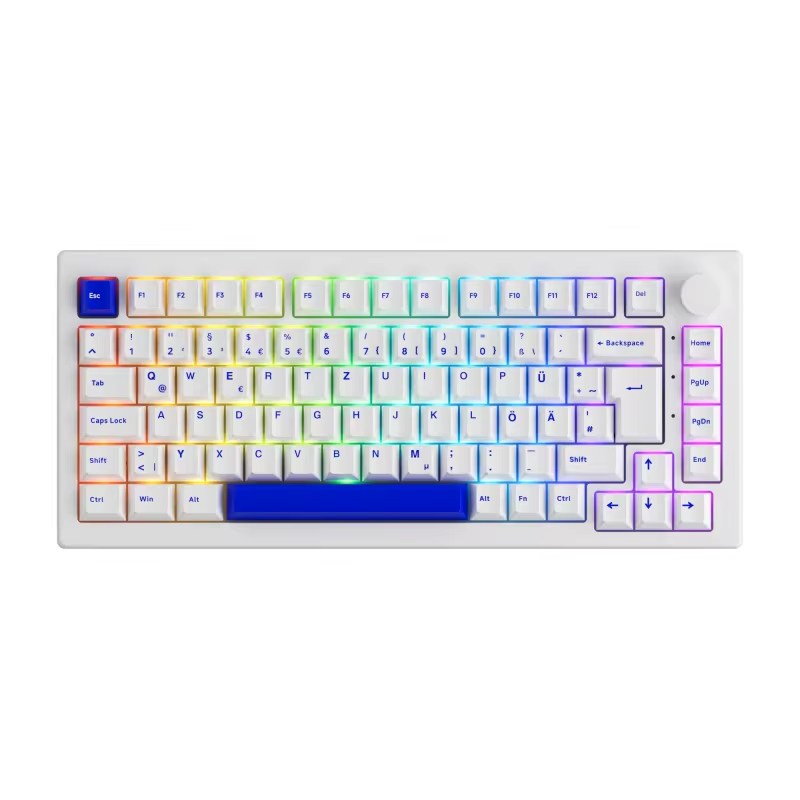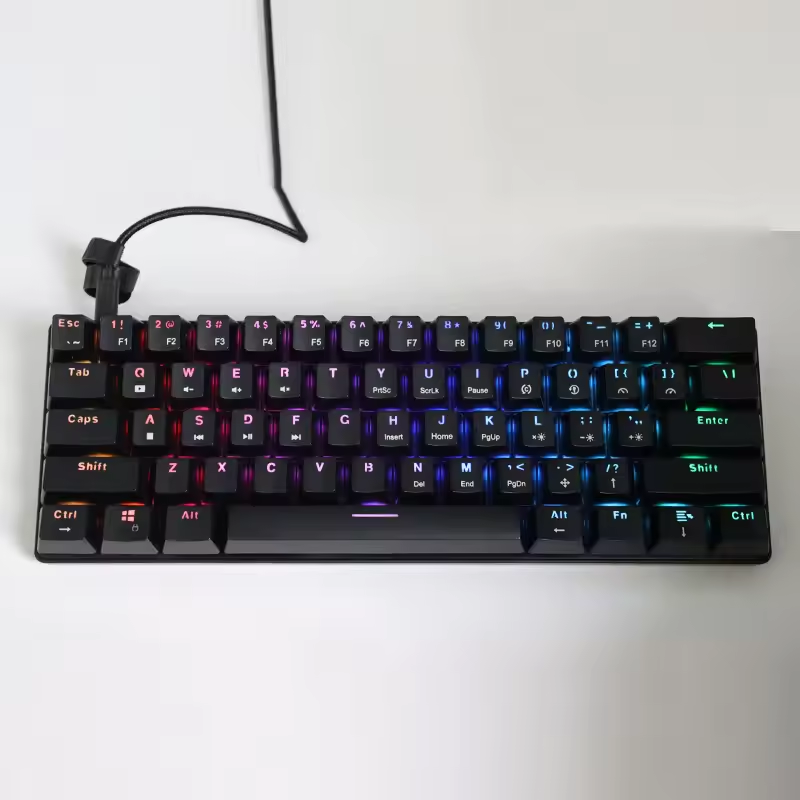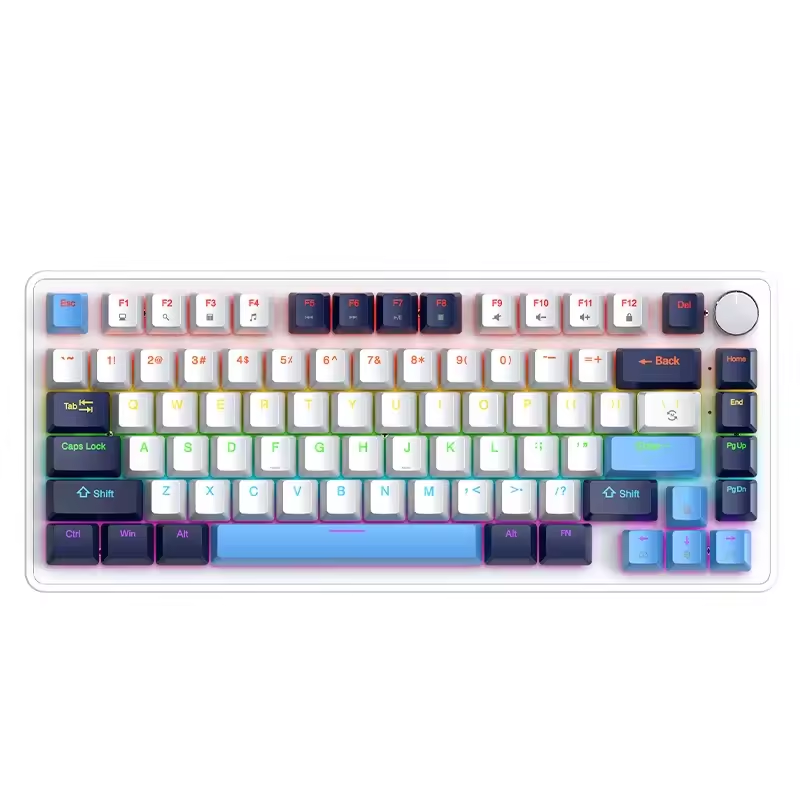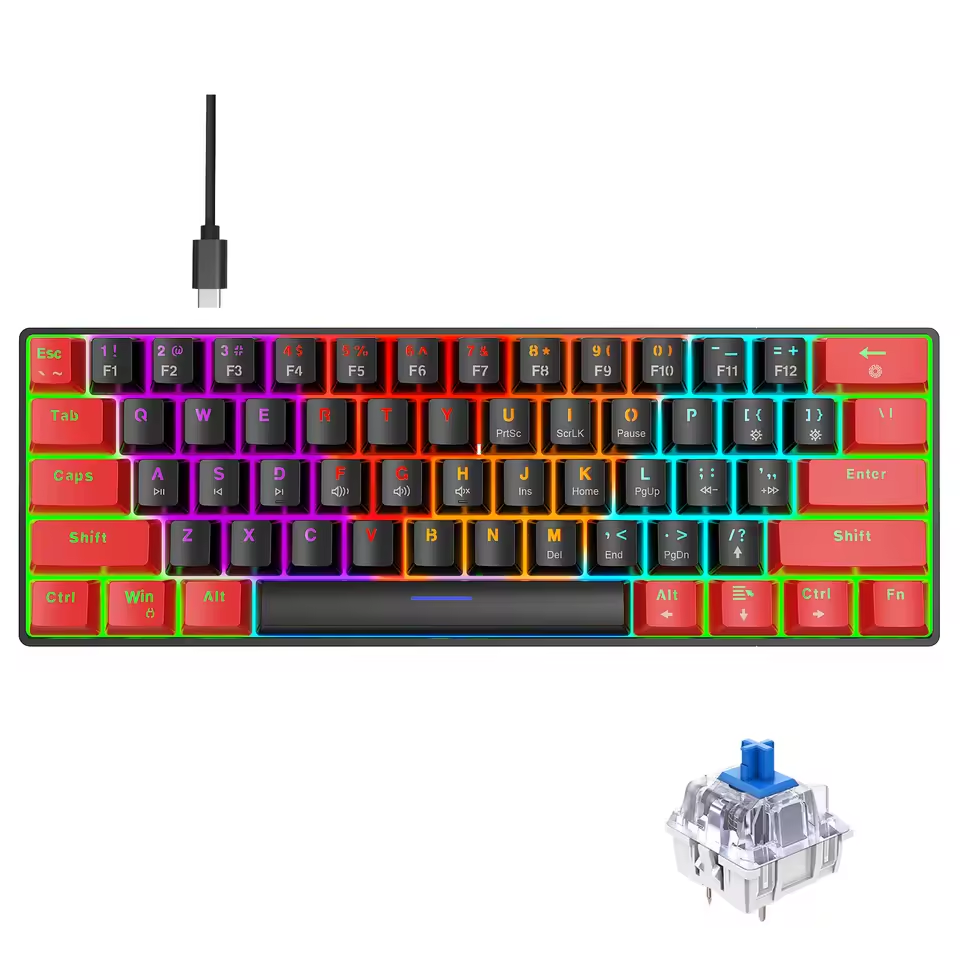Introduction to the 60% Keyboard Layout
The 60% keyboard layout strips away the numeric keypad, function row, and navigation cluster usually found on full-size keyboards. What you get is a compact form that emphasizes minimalism and portability. With the 60% layout, every key is within a comfortable reach, reducing the need to stretch your fingers across a large board. This layout includes the essential alphanumeric keys, modifiers, and often retains some function layer shortcuts to compensate for the missing physical keys. For those looking to declutter their workspace or require a keyboard that easily fits into a backpack, the 60% keyboard layout is an attractive choice. It’s especially popular among writers, coders, and gaming enthusiasts who prioritize desk space and keyboard feel over a plethora of keys.

This keyboard layout has gained momentum in the world of tech for various reasons. Not only does it save physical space, but it also offers an aesthetic appeal that complements modern work environments. People are drawn to the simplicity and the challenge of maximizing efficiency with limited resources. Professional users find the 60% keyboard layout enhances focus by keeping only the most used keys in sight. Enthusiasts may also argue that a smaller keyboard translates to quicker typing experiences as less hand movement is required. In the following sections, we will explore the advantages of using a 60% keyboard and how its unique features can benefit different types of users.
Advantages of Using a 60% Keyboard
The 60% keyboard layout holds several advantages beyond its space-saving design. One major benefit is enhanced portability; its smaller size makes it easy to carry around, ideal for those who work from multiple locations or enjoy attending LAN parties. The compact design also allows for a cleaner desk area, providing more room for mouse movement — a significant plus for gamers and graphic designers.
Another advantage is the improved ergonomics. The reduced size encourages a more natural arm and hand placement, potentially reducing strain during long typing sessions. Users no longer need to stretch to reach keys that are far apart, which complements an efficient typing style. This can lead to a better posture and less wrist pain over time.
A 60% keyboard also forces users to prioritize the functions of keys, streamlining workflows. With fewer keys, individuals learn shortcuts and utilize layers, which can accelerate typing speed and productivity. The focus on the core set of keys tends to sharpen muscle memory.
In addition, many users find that a 60% keyboard allows for a personalized typing experience. The minimalistic nature of these keyboards often means that they come with programmable features, enabling customization to fit one’s specific needs. It’s an attractive feature for users who enjoy tailoring their tools to optimize their performance.
Lastly, the aesthetic appeal of a 60% keyboard is undeniable. Its sleek form factor fits well within minimalist or modern-styled workspaces. Users can select from a range of designs and backlights to match their personal style and the decor of their environment.
In summary, the advantages of using a 60% keyboard layout include increased portability, better ergonomics, streamlined efficiency, customizable typing experience, and sleek aesthetics. Each of these benefits contributes to why the 60% keyboard layout is becoming increasingly popular among various user groups.
Key Differences Between 60% and Full-Size Keyboards
When comparing a 60% keyboard layout to full-size keyboards, the differences are quite notable. The most obvious distinction lies in size; a 60% keyboard is significantly smaller. A full-size keyboard includes a numeric keypad, function keys, and often dedicated media controls. In contrast, the 60% keyboard omits these sections. This compact design is ideal for those who want more desk space.
Another key difference is the key count. A full-size keyboard typically has around 104 keys, while a 60% keyboard only has about 61 keys. This means that many of the functions on a full-size keyboard are accessible on a 60% keyboard via layered functions. Users press multiple keys simultaneously to perform actions that would require a single keystroke on a full-size keyboard. This might require a learning curve but can lead to a more efficient typing experience once mastered.
Ergonomics also play a role in distinguishing the two layouts. The smaller size of the 60% keyboard promotes better posture since users aren’t reaching as far to access keys. This can reduce fatigue and discomfort during prolonged use.
From a customization standpoint, 60% keyboards tend to offer more options. Their simplicity allows for greater personalization. Users can program specific keys and create macros, streamlining their workflow. Full-size keyboards may not always offer this level of customization.
Lastly, the 60% keyboard’s minimalistic look sets it apart aesthetically from full-size keyboards. It fits well in modern, minimalist setups and can be a stylish addition to any desk.
In conclusion, 60% keyboards differ from full-size keyboards in size, key count, ergonomics, customization, and aesthetics. These differences appeal to users who prioritize desk space, comfort, and personalization.
Customization Options for 60% Keyboards
Customizing a 60% keyboard is not just about aesthetics. It enhances functionality to suit individual needs. Here, we’ll discuss personalization choices and how to make a 60% keyboard truly yours.
Keycap Replacement: Swapping out keycaps is often the first step in customization. Choose from various materials, colors, and designs to reflect your style. Custom keycaps can also improve the feel of typing.
Programmable Layers: Most 60% keyboards come with programmable layers. Assign multiple functions to a single key through software. This saves time and keeps your workflow smooth.
Macros & Shortcuts: Set up macros for complex series of actions. This is a boon for gamers and anyone needing swift access to repetitive tasks. Learn and assign keyboard shortcuts to boost your efficiency further.
Lighting Customization: LED or RGB lighting offers both a dynamic look and practical benefit. Customize brightness and patterns for ambiance. Use illuminated keys to navigate in low light conditions.
Firmware Options: Advanced users can venture into custom firmware. This allows for deeper customization at the keyboard’s core level. Change layouts, tweak performance settings, or add new features.
These custom options let you tailor your workspace and typing experience. They make a 60% keyboard not just a tool, but a reflection of your work style and personality.
Tips for Maximizing Efficiency with a 60% Keyboard
To get the most out of a 60% keyboard layout, a few tips and tricks can come in handy. Here are some strategies to maximize your efficiency:
Memorize Key Shortcuts: Since the 60% keyboard layout lacks dedicated function keys, learning key shortcuts is critical. Spend time practicing these combinations to speed up your tasks.
Customize Your Keymap: Tailor your 60% keyboard to fit your specific needs. Remap keys and create layers that work best for you. This personalization goes a long way in streamlining your operations.
Regularly Update Firmware: Keep your keyboard’s firmware up to date. This ensures you have the latest features and customization options available to maintain peak efficiency.
Keep It Clean: A clutter-free keyboard is more efficient. Dust and debris can affect keystrokes. Clean your 60% keyboard regularly to keep it in top condition.
Use External Tools if Needed: For tasks that require a numpad or extra keys, consider using external devices. A separate numpad or macro pad can complement your 60% keyboard without sacrificing desk space.
By implementing these tips, you can fully enjoy the benefits of a 60% keyboard layout and maintain a high level of productivity and efficiency in your work or play.

Recommended 60% Keyboards for Various Users
Choosing the right 60% keyboard is essential for ensuring optimal comfort and efficiency for your specific needs. Here, we recommend some of the top 60% keyboards that cater to various types of users, taking into consideration build quality, features, and price points.
For Gamers: Gamers need keyboards with fast response times and customizable features. Models with N-key rollover and anti-ghosting technology allow for precise and simultaneous key presses. Look for a keyboard with durable, tactile switches and programmable RGB lighting to enhance your gaming setup.
For Typists and Writers: Typists prioritize comfort and key feel. Keyboards with high-quality mechanical switches, such as Cherry MX or Gateron, provide a satisfying tactile feedback. A keyboard with customizable layouts can improve typing speed and reduce fatigue.
For Coders and Programmers: A 60% keyboard that supports multiple programmable layers is ideal for coding. This allows for easy access to the functions and shortcuts you use most. Look for a model with a robust build and the option to flash custom firmware.
For Travelers and Remote Workers: Portability is key for those on the go. Compact and lightweight keyboards with a solid build quality and wireless connectivity options are perfect for working from any location.
For Minimalist Desk Setups: For those who love a clean and uncluttered workspace, a 60% keyboard with a sleek design and customizable keycaps will complement your minimalistic style. Find one with a detachable cable for easy desk management.
In summary, there is a 60% keyboard out there for everyone. Consider your main activities and aesthetic preferences when making your choice. Be sure to check for must-have features like programmability, switch type, and connectivity options to match your lifestyle.
Essential Accessories for 60% Keyboard Users
Beyond the keyboard itself, some key accessories can enhance your 60% keyboard experience. Here’s a rundown of must-have items that complement a compact setup:
Wrist Rest: A supportive wrist rest can prevent strain during extended typing sessions. It helps maintain a healthy wrist posture.
Keycap Puller: This tool is handy for swapping out keycaps. It makes customization and cleaning simple and safe, minimizing wear on keycaps.
Switch Tester: If you’re unsure about which mechanical switch feels best, a switch tester lets you try out different options before you buy.
Cleaning Kit: Keep your 60% keyboard at peak performance with a cleaning kit. It often includes brushes, keycap puller, and cleaning solutions.
Portable Carry Case: A durable carry case protects your 60% keyboard while traveling. It’s a smart investment for remote workers or students.
USB Cable: A high-quality USB cable, possibly with a braided design or unique colors, can add to your setup’s visual appeal and longevity.
Adding these accessories to your 60% keyboard setup ensures comfort, personalization, longevity, and hygiene, all while keeping your working area efficient and stylish.
Transitioning from a Full-Size to a 60% Keyboard
Switching to a 60% keyboard layout can be a big adjustment if you’re accustomed to a full-size keyboard. Here are steps to make the transition smoother:
Get Familiar with the Layout: Spend some time understanding the compact arrangement. Notice which keys are missing and how layers work.
Practice Key Combinations: Without dedicated function or navigation keys, learn the key combinations you’ll use most often.
Customize Your Setup: Take advantage of programmable keys and layers. Map your most-used actions to easily accessible keys.
Be Patient: Transitioning may slow you down at first. Give yourself time to adapt to the smaller form factor.
Keep a Cheat Sheet: Until you memorize shortcuts and layers, keep a reference guide handy.
Gradually Phase Out the Full-Size Keyboard: Start by using the 60% keyboard for specific tasks, then increase its usage over time.
Embrace the Change: Appreciate the extra desk space and cleaner aesthetic the 60% keyboard brings.
By following these tips, you can ease into using a 60% keyboard layout. Enjoy the space-saving benefits and potential for increased efficiency once you get the hang of it.